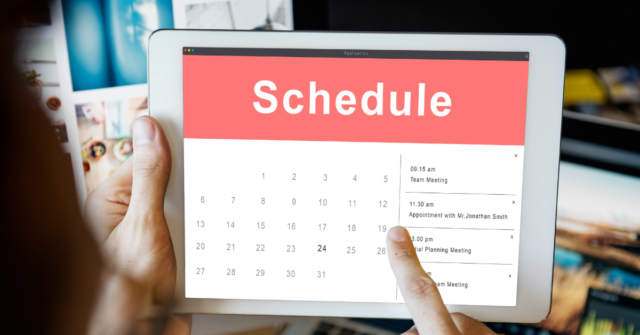Consistency is key to the success of any blog, but maintaining a steady flow of content can be challenging without proper planning. That’s where a blog content calendar comes in. A content calendar helps you organize your blog posts, stay on track with publishing, and ensure you’re delivering valuable content consistently. Whether you’re running a personal blog or a business website, creating a blog content calendar can help you streamline your content creation process and grow your audience.
In this guide, we’ll show you how to create a blog content calendar that keeps you organized and ensures your blog stays active and relevant.

Table of Contents
Toggle1. Set Clear Goals for Your Blog
Before diving into the calendar itself, it’s crucial to define the goals for your blog. Understanding what you want to achieve helps shape your content strategy. Your goals could be:
- Driving traffic to your website
- Boosting engagement with your audience
- Increasing email subscribers
- Establishing yourself as an authority in your niche
Once you have a clear understanding of your objectives, you can tailor your content to meet those goals, making your calendar more effective in guiding your blog’s direction.
2. Identify Your Target Audience
To create content that resonates with your readers, you need to know who they are. Conduct research on your audience’s preferences, challenges, and interests. Ask yourself:
- What topics are they interested in?
- What problems are they trying to solve?
- What type of content (how-to guides, listicles, case studies) do they prefer?
Having a clear picture of your target audience will help you craft blog posts that meet their needs and engage them consistently.
3. Brainstorm Blog Post Ideas
Now that you know your blog’s goals and target audience, it’s time to come up with blog post ideas. Start by brainstorming topics that align with your objectives and address your audience’s pain points. Consider breaking down broad subjects into smaller, more specific topics to generate a variety of content ideas.
Here are some ways to come up with blog post ideas:
- Use keyword research tools like Google Keyword Planner or Ahrefs to find popular search queries.
- Explore your competitors’ blogs for inspiration.
- Conduct surveys or polls to find out what your audience wants to read about.
- Repurpose older content into updated posts, infographics, or videos.
Once you have a long list of ideas, prioritize them based on relevance to your audience and your business goals.
4. Decide on a Posting Frequency
Consistency matters more than frequency when it comes to blog posting. Whether you post once a week or three times a month, pick a schedule that is realistic for you to maintain over time. Overloading your schedule can lead to burnout and cause quality to suffer.
A good rule of thumb is to start with a manageable posting frequency and scale up once you have a steady workflow. For example, if you’re just starting out, aim to post once or twice per week and increase the frequency as you get more comfortable.
5. Create Your Blog Content Calendar Template
To keep track of your content ideas, posting schedule, and deadlines, you’ll need to create a blog content calendar template. There are various tools available for this, from simple spreadsheets to more sophisticated project management platforms. Some popular tools for content calendars include:
- Google Sheets or Excel: A simple, customizable option.
- Trello: Offers card-based project management, perfect for tracking the status of each post.
- Asana: Great for managing larger teams and setting deadlines.
- CoSchedule: A specialized tool built for content marketing, offering features like editorial scheduling and social media integration.
Your calendar should include the following elements:
- Post Title: The working title of the blog post.
- Author: Who is responsible for writing the post.
- Topic/Category: The general topic or category (e.g., marketing, technology, lifestyle).
- Keywords: Target keywords for SEO purposes.
- Publish Date: When the blog post will be published.
- Status: The current status (e.g., idea, writing, editing, scheduled, published).
This template will help you stay organized and make it easy to keep an eye on upcoming posts and deadlines.
6. Assign Deadlines and Publishing Dates
Assign deadlines for each stage of the content creation process, such as writing, editing, and publishing. This ensures that you’re not scrambling to create content at the last minute and that your blog posts are ready to go live on time.
Be mindful of realistic timelines. Give yourself enough time for research, drafting, editing, and optimizing the content for SEO. If you’re working with a team, make sure everyone understands their role and has clear deadlines.
Pro tip: Try to schedule posts ahead of time. Having a buffer of scheduled content ensures that your blog continues running smoothly, even if unforeseen events disrupt your regular workflow.
7. Incorporate Seasonal and Trending Topics
When planning your content calendar, consider incorporating seasonal topics or trends relevant to your industry. For example, if you run a food blog, you might plan posts around major holidays like Thanksgiving or Christmas. For a tech blog, you can schedule content around big events like product launches or industry conferences.
Use tools like Google Trends to spot upcoming trends in your niche and create content that capitalizes on them. This keeps your blog relevant and increases the chances of attracting new readers.
8. Balance Evergreen and Timely Content
A successful blog content calendar should strike a balance between evergreen content and timely posts. Evergreen content refers to posts that remain relevant and valuable over time, such as “How to Start a Blog” or “The Benefits of SEO for Small Businesses.” These articles continue to generate traffic long after they’re published.
Timely content, on the other hand, addresses current trends, news, or events. For example, a blog post titled “The Latest SEO Trends for 2024” will attract readers interested in up-to-date information.
By balancing both types of content, you ensure that your blog consistently attracts traffic while staying relevant to current trends.
9. Optimize Content for SEO
While creating content is important, optimizing it for search engines ensures that your posts reach a broader audience. Incorporate the following SEO elements into your blog posts:
- Keywords: Research and use relevant keywords in titles, headings, and throughout the post.
- Meta descriptions: Write compelling meta descriptions that include your target keyword.
- Internal linking: Link to other relevant posts on your blog to improve site navigation and SEO.
- Alt text: Use descriptive alt text for images to help search engines understand the content.
Integrating SEO best practices into your content calendar helps ensure your blog ranks well in search engine results, increasing visibility and traffic.
10. Review and Adjust Regularly
Creating a content calendar is not a one-time task. Regularly reviewing your calendar helps you stay on track, adjust your content based on performance metrics, and incorporate new ideas.
Every month or quarter, evaluate which types of posts are performing well and which need improvement. Are certain topics driving more traffic or engagement? Did seasonal content perform as expected? Use this data to refine your content strategy and improve future blog posts.
Conclusion
A well-planned blog content calendar is the cornerstone of consistent blogging and audience engagement. It helps you stay organized, ensures you’re posting content regularly, and allows you to align your blog with your long-term goals. By following these steps, you can create a content calendar that drives your blog’s success, keeps your audience coming back for more, and helps grow your online presence.


No responses yet